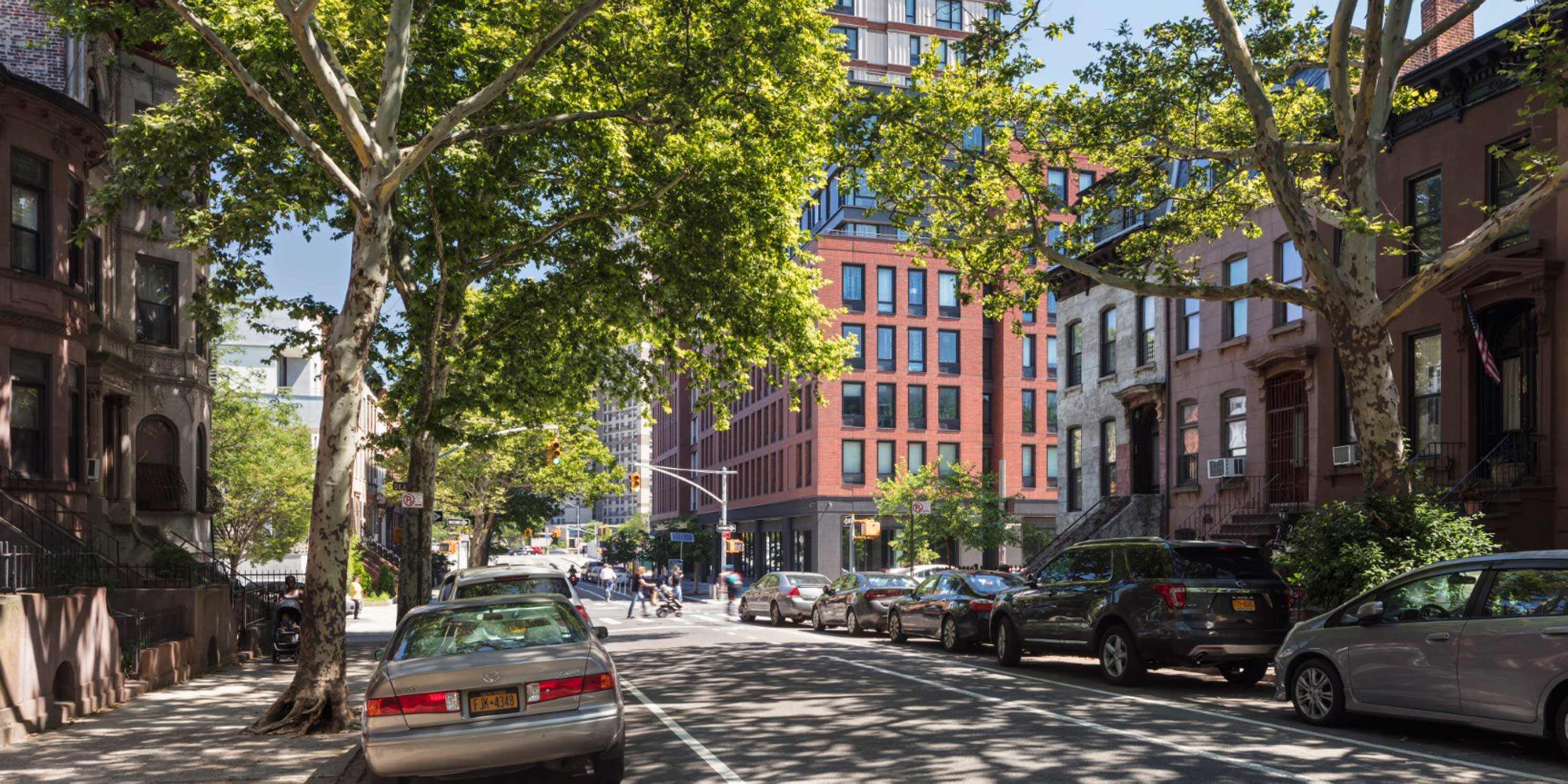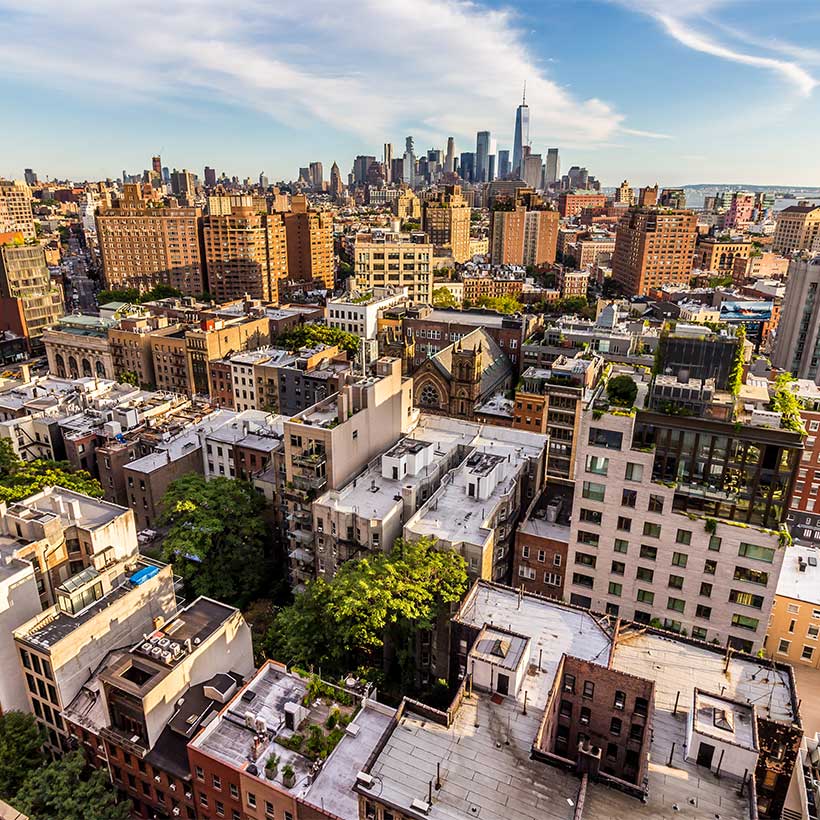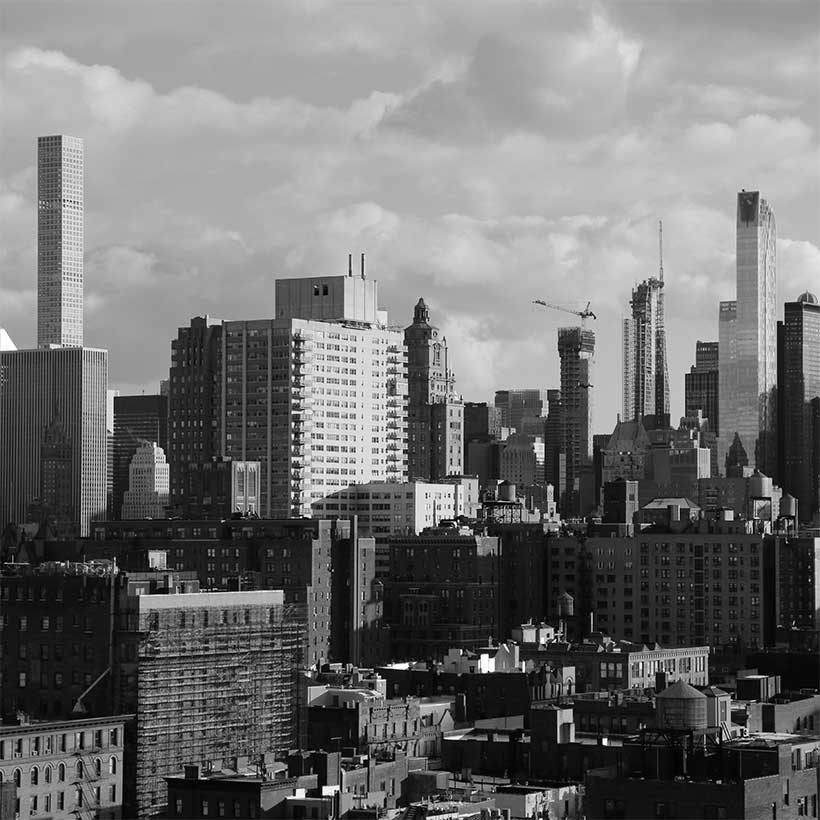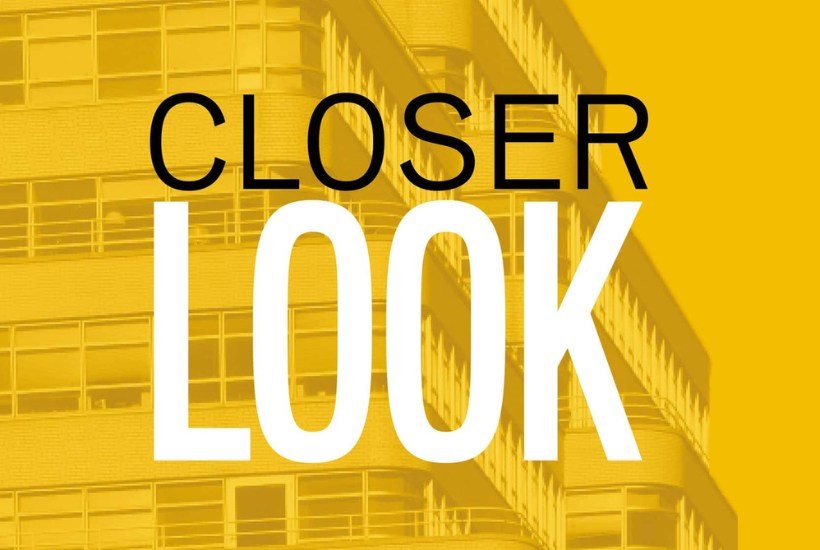How FAR to Affordable?
With the NY State Fiscal Year 2025 budget passed and the City of Yes under public review, how far away is New York City from achieving affordability? What else do we need to get to a place where lower- and middle-income residents can afford to live in resourced neighborhoods with access to quality schools, services, public transportation, and parks?
Feeling the pressure of a severe housing crisis, competing sides came to the negotiating table to pass a budget that includes tools intended to increase housing supply by incentivizing private development: the long-debated lifting of the 12 FAR residential density cap for New York City, a new tax incentive for promoting affordable housing through converting office buildings to residential uses, and 485-x, a new tax incentive program to replace the expired 421-a. Details on the FAR cap and tax incentives are outlined further below.
As part of these negotiations, unions achieved wage increases for construction workers, and tenants gained some protection from evictions and rent increases; however, some advocates are concerned about limitations, unintended consequences, and loopholes.
The budget also authorizes the City to establish a pilot program to legalize and convert inhabited basement and cellar apartments and create a tax exemption for accessory dwelling units (ADUs), which have been successful in spurring housing growth in other cities.
While lifting the FAR cap and approving the new 485-x program may result in more housing in New York City, these changes are likely to increase development in high-value areas that are already saturated with development like downtown Brooklyn, and Long Island City. And 485-x did not go far enough to guarantee we will see affordable housing for lower-income New Yorkers in these areas.
What we need is truly affordable, equitably distributed housing development across the city that reflects the existing context of neighborhoods and true community needs.
Download Testimony
The pieces of the citywide affordable housing puzzle are laid out in front of us. The City of Yes for Housing Opportunity proposed zoning text amendment will allow ADUs in lower density areas, remove outdated parking requirements, and modernize zoning restrictions to foster incremental development, transit-oriented residential growth, and promote affordable housing across the city.
However, it has become clear that we cannot rely on some of our existing programs, like Mandatory Inclusionary Housing (MIH), and tax incentives for developers to deliver the levels of affordable housing we need. Particularly since MIH continues to use income level percentages not aligned with most residents in rezoned neighborhoods. Additionally, several recent studies have found that 421-a did not provide the promised affordable housing, certainly not at affordability levels within reach of most New Yorkers. This is why MAS advocated for stronger conditions tied to the lifting of the FAR cap, including higher affordable housing requirements.
- Read MAS’s 2015 analysis, 421a Tax Exemption: A failed experiment in incentivizing affordable housing.
- Read Comptroller Lander’s 2022 report, A Better Way than 421a: The High-Rising Cost of New York City’s Unaffordable Tax Exemption Program.
- Read The NYU Furman Center’s 2022 study, The Role of 421-a During a Decade of Market Rate and Affordable Housing Development.
The new 485-x increases affordability by removing the highest income bracket option that was used in 421-a, but many feel they could have gone further. We are encouraged that a bill sponsored by NY State Assemblymember Emily Gallagher and Senator Brad Hoylman-Sigal passed in the budget, which will require annual government audits of buildings receiving the 421-a tax break. We hope this audit will be extended to 485-x.
What’s Next?
With the State budget passed, how the City moves forward with the suite of actions proposed in the City of Yes will be critical to the success of the State legislative actions and to moving the needle on our housing affordability crisis.
MAS has stated support for the City of Yes as it will open the door for more contextual housing to be built citywide, including in less dense well-resourced neighborhoods near transportation. City of Yes is also an opportunity for us to modernize and streamline our zoning text in a way that addresses long-standing inequities in our built environment.
That said, with all large system overhauls, the details require a close look. The City should ensure its zoning text and related programs are coordinated with the State legislation to maximize affordability in exchange for more density. Additionally, all these programs, including 485-x, MIH, and Universal Affordability Preference (UAP), must be carefully reviewed and audited over the course of the next ten years to ensure they achieve the stated goals of affordability and housing supply. Data on these initiatives will help us decide where changes must be made.
Finally, beyond this toolbox of zoning changes and developer incentives, our legislators need to continue to pursue other means of achieving housing affordability such as an expansion of the Historic Tax Credits in New York City, and support for social housing and community land trusts.
Key Things to Know about the FAR Cap and Tax Incentive Changes
Lifting of the 12 FAR Cap
- The State budget amends the Multiple Dwelling Law to remove the 12 FAR cap for residential districts, giving the City of New York control over setting FAR limits.
- This does not automatically allow new buildings to exceed 12 FAR. Sites must be rezoned and go through the ULURP process.
- The City of Yes for Housing Opportunity zoning text amendment proposes two new residential districts, R11 and R12, which come with a maximum FAR of 15 and 18, respectively.
- Any residential project that exceeds FAR 12 must have at least as much affordable housing as is required under the Mandatory Inclusionary Housing program.
- Residential developments in designated historic districts or those that share a lot with a building containing joint living-work quarters for artists are not allowed to exceed 12 FAR.
- If a developer wants to demolish a residential building to take advantage of the higher FAR, tenants must be offered buyouts worth up to six months of rent, or a new lease in a comparable unit.
421-a Extension
- For projects where foundation footings were in the ground before June 15, 2022, the deadline was extended from 2026 to 2031 for developers to receive 421-a tax benefits that comply with applicable affordability options.
485-x: The 421-a Replacement
- 485-x will be added to the private property exemptions under the New York Real Property Tax Law. It expires on June 15, 2034.
- 485-x creates a tiered system of incentives to foster affordable housing development with affordability requirements and benefits tied to the size and type of project.
- Affordability Levels: To be eligible for 485-x benefits, projects will be required to set aside either 20% of units in smaller buildings (more than six, but less than 100 units) and 25% in larger buildings (more than 100 units) at incomes that are no more than 80% of the Area Median Income (AMI).
- For projects with more than 150 units south of 96th Street in Manhattan, on the Brooklyn and Queens waterfront (Williamsburg, Greenpoint, and Long Island City), and Dumbo, Brooklyn Heights, Astoria, and Queensbridge) 25% of the units must be set aside at an AMI average of 60%.
- The highest-income option (30% of units set aside for households earning 130 % AMI) was removed from the deal.
- The length of the tax exemption period increased from 35 to 40 years.
- Income-restricted units must remain permanently affordable.
Office to Residential Conversion Tax Incentive
- A tax incentive was included in the budget for commercial to residential conversions in NYC.
- 25% of new units must be affordable at 80% AMI, including 5% of the units a 40% AMI.
- Length of benefit ranges 25-35 years.
- Exemption starts at 90% off tax bill in areas of Manhattan south of 96th Street and 65% outside of Manhattan.



